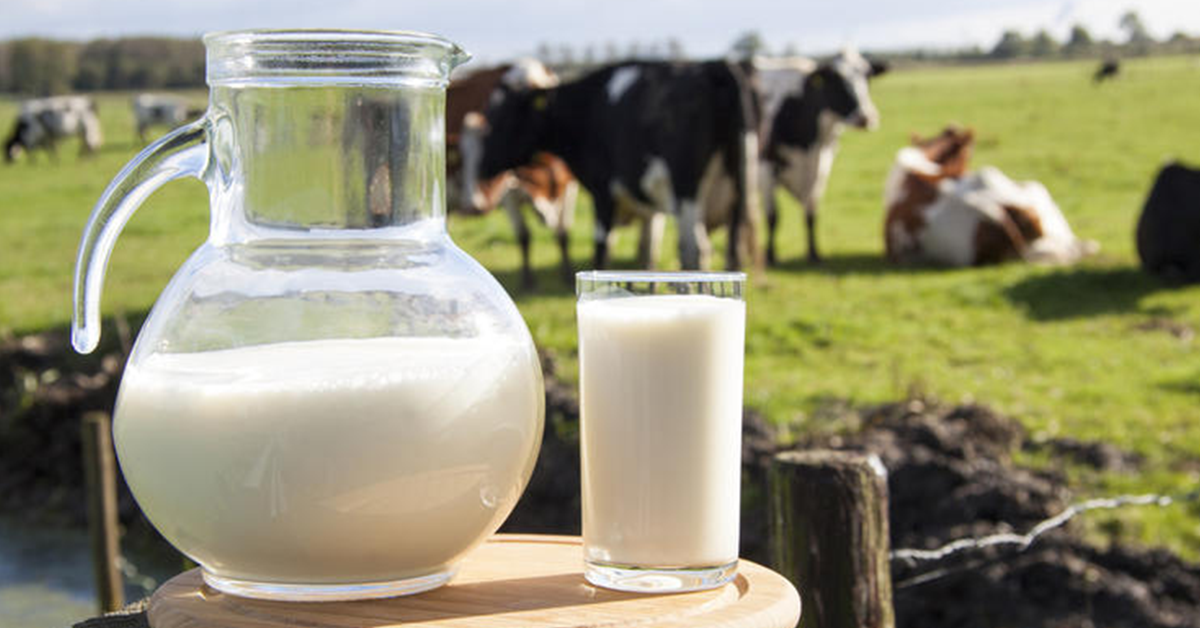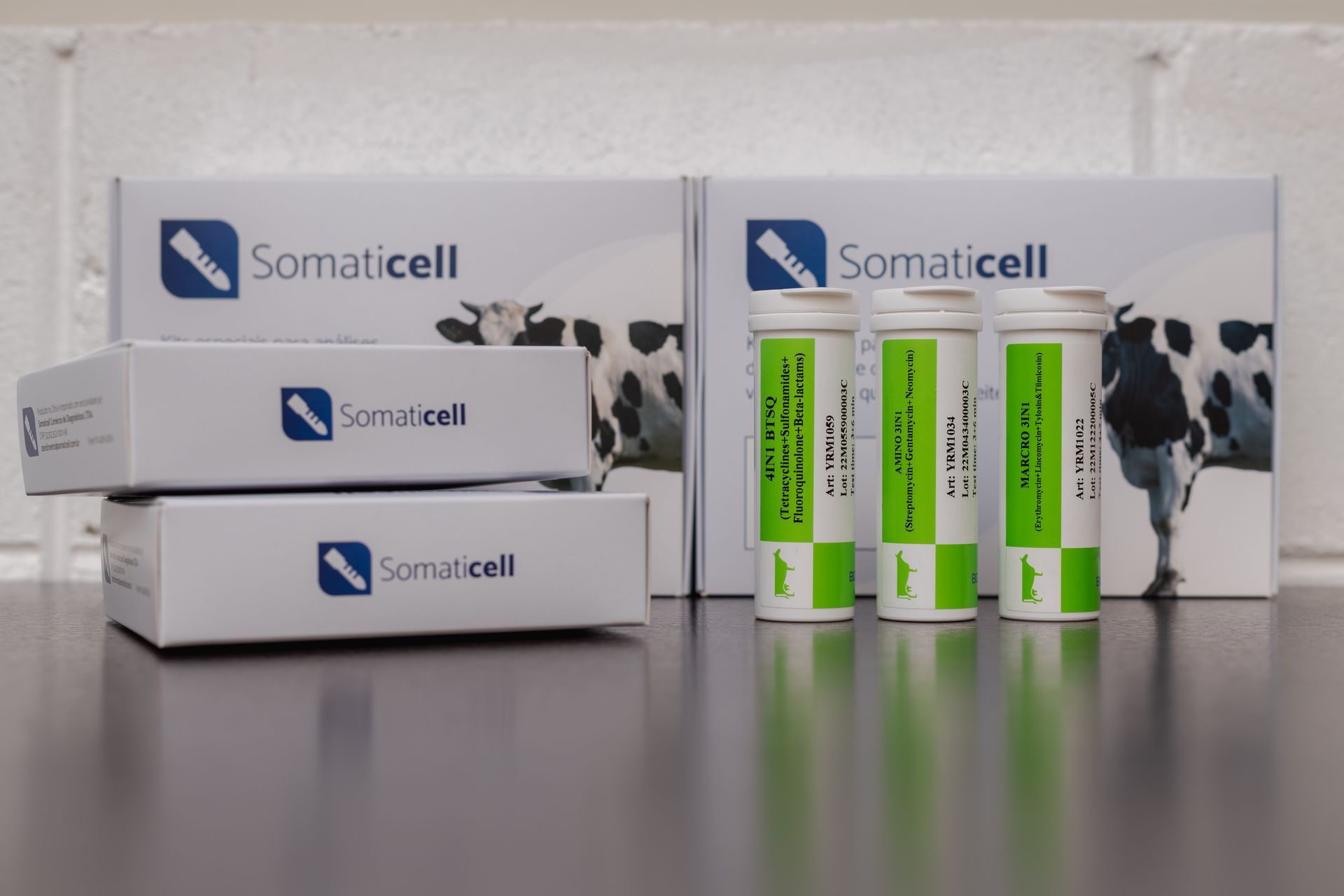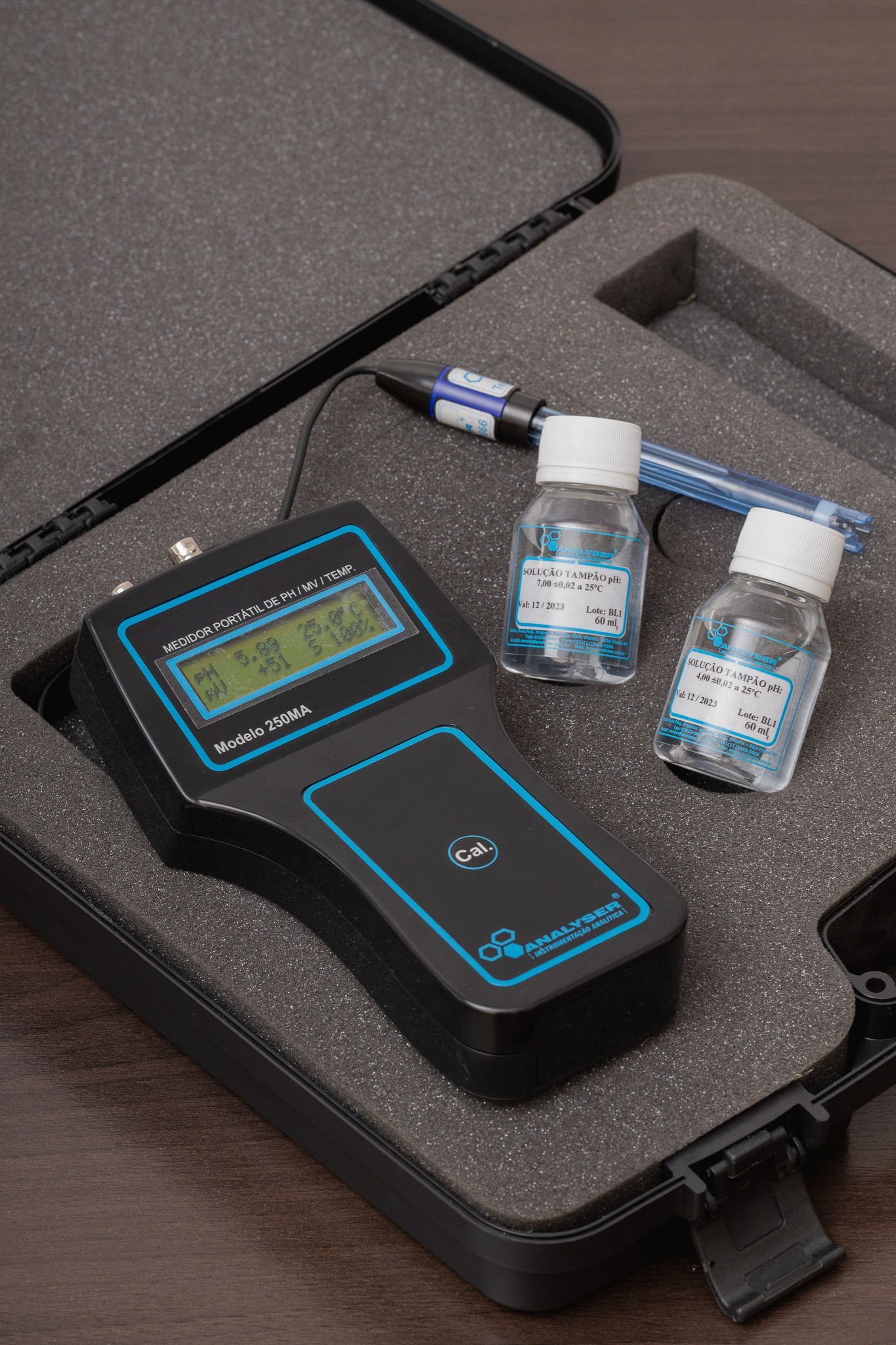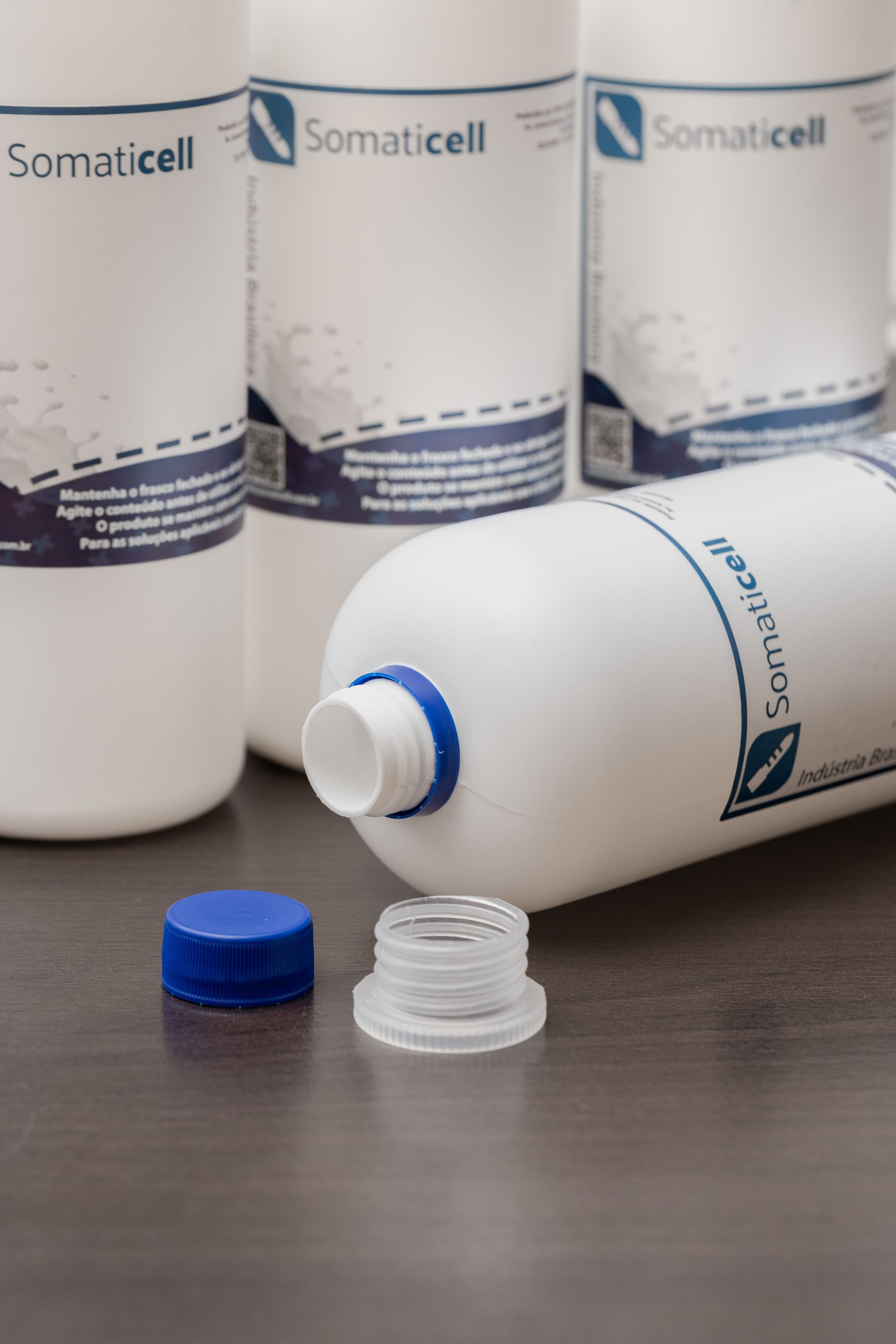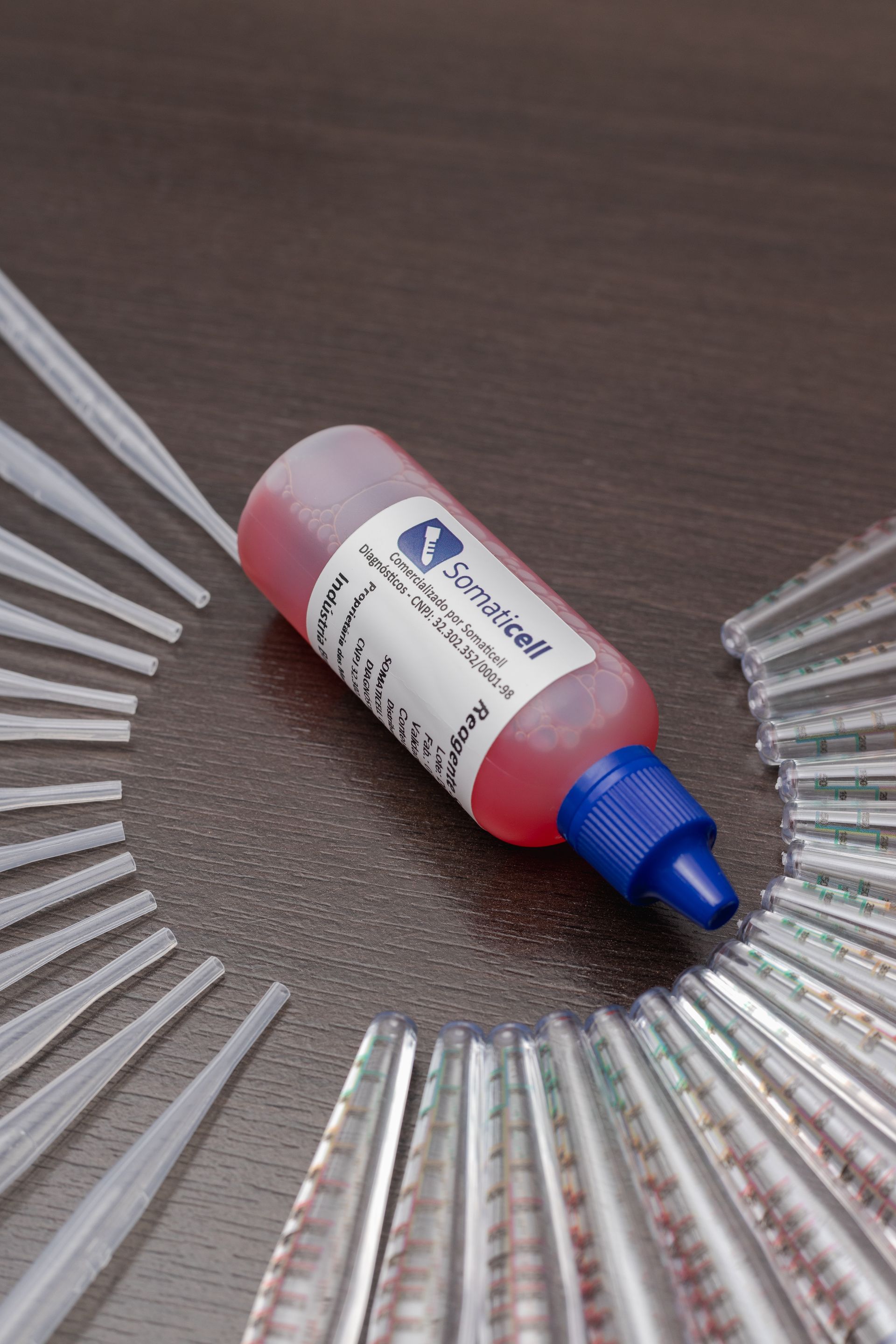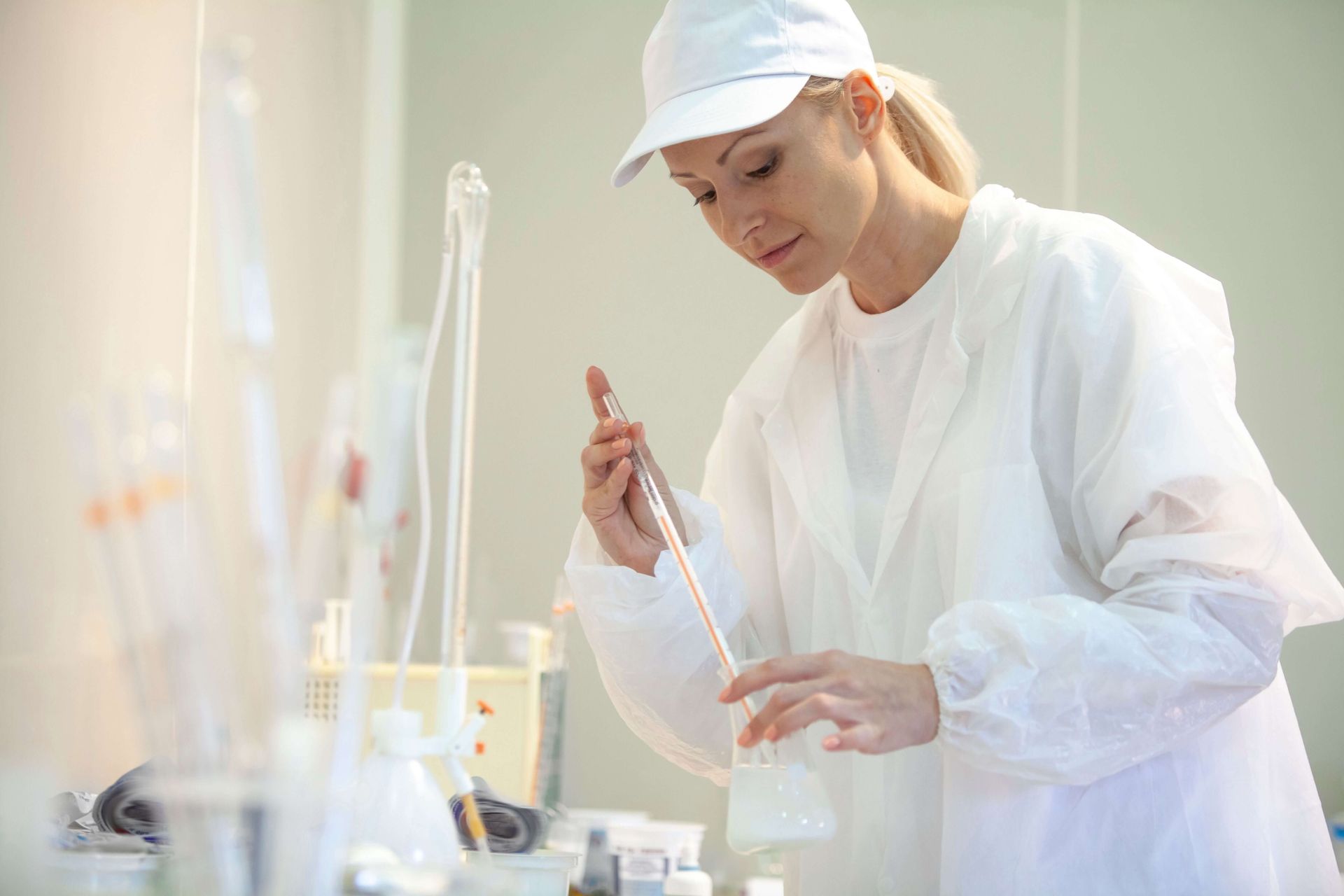Bovine milk formation: Learn how it happens
No time to read? Listen to the narration of this article in Portuguese:
After all, how does bovine milk form?
Milk consists mainly of fat, proteins, lactose and somatic cells.
Somatic cells in milk are mainly represented by two classes of cells:
- Desquamation cells of the epithelium of the mammary gland itself;
- Defense cells (leukocytes) that leave the blood for the udder.
- There is no doubt that somatic cell counts have direct impacts on milk quality.
- Isso porque, de acordo com os estudos realizados pela EMBRAPA, a contagem de células somáticas tem correlação direta com a composição do leite bovino.
To better clarify doubts around the topic, in this article we have selected the following topics for discussion:
- O que são células somáticas?
- Somatic cell score (linear score)
- What is the somatic cell count (SCC) used for?
- What is the impact of somatic cells on bovine fertility?
- Somatic cell count in lactation
- Somatic cell count as an indicator of milk quality
- A contagem das células somáticas e o diagnóstico da mastite bovina
Keep reading!
What is udder
Udder is the organ of the cow where milk production occurs. There are two parts to it - the right and left - and 4 mammary glands. The pieces are separated by a middle partition. In each of the pieces there are 2 lobes — front and back, which can develop irregularly. Most often, more milk is formed in the posterior lobes than in the front ones, this is due to the content of more alveoli in them.
The Udder is formed by 3 types of tissue: glandular, fatty and connective. The glandular tissue is made up of the alveoli. Connective tissue performs a supportive function and protects the udder from the adverse effects of the environment, its fibers divide the cow's milk-forming organ into lobules.
For each nipple there is a milk tank or breast. Note that the more the animal gives milk, the thinner the skin on the udder.
The circulatory system of the udder is represented by:
- perineal arteries;
- external controversial artery and vein;
- milk tank vein and artery;
- subcutaneous abdominal milk vein.
The body hosts many blood vessels. The more vessels and nerve plexuses, the greater the performance of the animal. Each alveolus is surrounded by capillaries. To form 1 liter of milk in the mammary glands, at least 400 ml of blood must pass through them.
Through the arteries, the blood enters the mammary gland, and through the veins it returns to the heart. The arteries are located deep, they cannot be seen, but the veins are clearly visible on the surface of the udder. Powerful subcutaneous abdominal veins, which are clearly visible, are called milky, and their size determines the milking of the cow - the larger it is, the greater the milk yield.
The better the development of the circulatory system in the mammary gland, the more branches it has, the better the supply with nutrients and oxygen.
Lymphatic system
The lymphatic circulation system begins in the area of \u200b\u200bthe alveoli, around which lymphatic gaps and spaces are located. Collection takes place in interlobular vessels. Later, it flows through the lymph nodes into the lymphatic cistern and then through the thoracic duct into the vena cava.
In the mammary glands there are many vessels with lymphatic flow. Each lobe contains lymph nodes the size of a walnut. Lymph is derived from them by vessels, one of which is connected with the lymphatic circulation system of the rectum and genitals, and the other with the inguinal lymph nodes.
Nerves
In the skin, in the nipples, in the alveoli there are many nerve endings that respond to the irritation that occurs in the mammary gland, and report them to the brain. The most sensitive nerve receptors are located on the nipples. The spinal cord with udder is connected by nerve trunks, which branch into thin filaments that carry signals from the central nervous system. Nerves play an important role in the growth and development of the mammary gland, as well as the volume of milk formed.
Milk follicles
Glandular tissue is formed by the alveoli or follicles in the form of small sacs. Inside they contain cells in the form of asterisks, which are responsible for the formation of bovine milk. With the help of tubules in which the stellar cells are located, the alveoli have a connection with the milk ducts. These channels pass into the milk tank, and the tank communicates with the nipple.
Milk follicles have an extensive working area, a complex working system. They react sharply to changes in the environment and change every time after lactation. It is in the alveoli before the milking process begins that 50% of the milk accumulates (up to 25 liters). The remaining 50% is contained in the ducts, milk tank and nipples.
Nipples in the role of bovine milk formation
Each lobe has a nipple. Cows can often have between 5 and 6 nipples. The udder is considered good if its nipples are the same size - from 8 to 10 cm in length and 2 to 3 cm in diameter. The shape is like a cylinder, vertically hanging and perfectly releasing the milk when squeezed. The nipple segregation base, body, apex and a cylindrical part. Its walls form the skin, connective tissue and mucous membranes. In the upper part is the sphincter, thanks to which the milk does not flow out without milking.
Nipples play an important role in lactation and prevention of infection in the mammary glands. Their skin lacks sweat and sebaceous glands, so care must be taken to prevent the reproduction of pathogenic microflora and the formation of cracks.
It is important that the farmer empties each one of them completely, as the milk cannot pass from one lobe to another and leave the other nipple, which means that it will not form milk in the maximum amount the next time.
Stages of development of udders in cows
For the development of the mammary glands of the cow are responsible nervous and endocrine systems. Embryonic glands are placed outside the epithelial thickening, the location of which is in the abdominal cavity behind the navel.
Subsequently, 4-6 nipples form from it, from which, after the formation of the circulatory system and nerve fibers are completed, the mammary glands develop. The udder of a 6 month old fetus already has milk ducts, cistern, nipple and fatty tissue. After birth and before puberty, the udder gradually takes shape and grows. During this period, it forms mainly from adipose tissue.
When a cow reaches puberty, her udder enlarges significantly. She is affected by the active production of sex hormones, and thus takes on the shape that is characteristic of a mature puppy. The growth of canals and ducts ends in the 5 month of gestation, in addition, from 6 to 7 months, the alveoli finally complete their formation.
The glandular tissue is completely formed until the 7 month of pregnancy, its increase occurs after childbirth. This process will be affected by active hormone production, proper milking, as well as massage and nutrition of the heifer. Gland development and growth is carried out in up to 4-6 genera. Changes occur in the structure according to sexual cycles, lactation periods, exercise and age of the cow.
Cows with a wide cup-shaped udder, which is well projected forward, adjacent to the body, highly attached at the rear, are believed to have high performance. Udder fractions should be uniform as well as symmetrical. In handling, the udder should be soft but also flexible.
Extinction of the mammary glands
Extinction of the mammary glands occurs after 7-8 births - during this period tissue volume as well as glandular ducts are reduced, and connective and adipose tissues increase.
Successful breeders with proper efforts, which include improved nutrition and quality care, can extend a heifer's productive period to 13-16 lactations, and sometimes even more.
How does the milk formation process work?
The main function of the udder is lactation. The lactation process consists of two stages:
- Formation of bovine milk.
- Milk yield.
Lactation begins a few days before childbirth or immediately after, as a result of the production of the hormone prolactin. In the first days of this process, colostrum forms in the alveoli - a thick liquid, saturated with nutrients and valuable substances, as well as antibodies. Milk begins to form in the milk follicles after 7-10 days.
The milk formation process is influenced by several factors:
- active replenishment of the udder with nutrients through blood vessels;
- normal functioning of the lymphatic system;
- release of the hormone prolactin as a result of childbirth, irritation of the nipples when sucking a calf or when touched warmly.
Milk is formed continuously, mainly in the intervals between milking processes, when a small amount is formed directly. As milk forms, it fills the alveoli, ducts and cisterns. As a result, smooth muscle tone decreases and muscle fiber contractions weaken, which prevents an increase in pressure within the glands and contributes to the continued accumulation of milk.
However, if the udder is not emptied for more than 12-14 hours, the pressure increases, the action of the alveoli is inhibited, milk production decreases. Thus, with regular and complete emptying of the udder, the level of milk formation is maintained at a high level. Long intervals between milking processes or incomplete emptying of the udder imply a decrease in milk production.
Milk yield
Milk production is a reflex that manifests itself during milking and is accompanied by the release of milk from the alveoli into the cisterns. From the milk follicles, fluid is secreted compressing the cells that are around them. After such compression, it flows into the ducts, then into the cistern, the outlet canal and the nipples.
During stimulation with the calf's lips or with other stimulating factors of the nipples and their nerve endings, a signal is emitted to the cow's brain, thus, we have the command to the pituitary gland. The pituitary gland releases hormones into the bloodstream, which are responsible for milk production and contraction of the myoepithelium of the mammary glands. As a result, there is a reduction of cells located around the alveoli.
The cells, in turn, compress the alveoli, and then from them milk falls along the ducts into the cisterns. Milk production is done after 30-60 seconds after nipple stimulation. Its duration is from 4 to 6 minutes. During this time, the milking process should begin. After oxytocin production ceases, the alveoli do not compress. The milk delivery process is also regulated by some incentives, just to illustrate: milking time, milking machines, etc.
Simultaneous production
Milk production occurs simultaneously in all 4 lobes, even if only one nipple is stimulated. The least amount of milk comes out of the part that is given last. So, as a rule, by the time of your milking, the milk flow reflex is already extinguished.
Bovine milk formation: important
If a cow is frightened during lactation or in pain, then the process may stop. In these cases, the ducts narrow and in this way, it is possible to milk only the milk contained in the tanks. The milk accumulation process lasts from 12 to 14 hours after the previous milking.
Several factors influence milk production, the most important being a well-developed udder rich in glandular tissue. Milk flow directly affects the development of the circulatory as well as lymphatic systems.
However, not only does the udder play a role in a cow's performance - an underfed, poorly cared for, malnourished cow, suffering from a vitamin and mineral deficiency, will not be able to produce enough milk, even with a good udder.
So, did you like the information? We provide a lot of content on our blog, so you can learn more about the health of your herd.
Entre em contato com a gente e fale com um de nossos especialistas!
Com a Somaticell, a sua cadeia produtiva de leite nunca mais será a mesma!

Discover our App

Our Educational Videos
Somaticell on Social Networks


